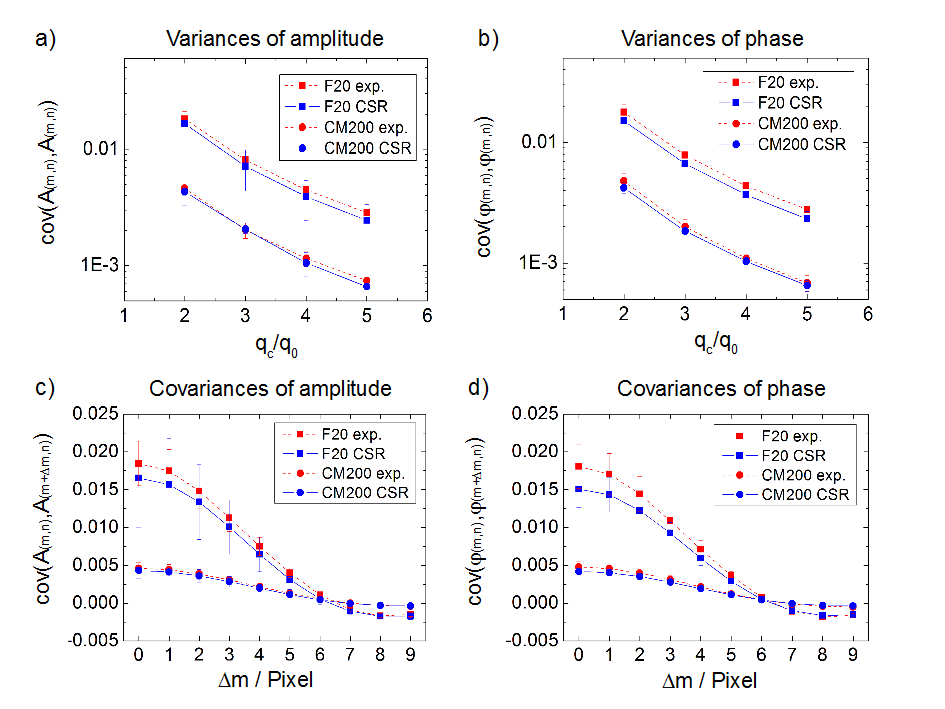IT-11-P-1676 Noise estimation for off-axis electron holography
Off-axis electron holography provides access to the phase of the elastically scattered wave in a transmission electron microscope by formation of an interference pattern at the image plane (hologram) encoding amplitude and phase therein [1]. Quantitative interpretations of experimental phase shifts retrieved from these holograms additionally require the knowledge of the noise transferred through the detection and holographic reconstruction process. Only for the special case that assumes homogeneous samples, uncorrelated Poissonian distributed noise and a special reconstruction aperture corresponding to the real-space reconstruction scheme [2], noise transfer formulas were derived by F. Lenz [3]. Here, we present a general noise transfer formalism for off-axis electron holography providing access to the final covariance matrix of amplitude and phase for arbitrary objects and reconstruction apertures. As an initial condition, we need the covariance matrix of the detected hologram, which is determined by the noise transfer properties of the detector. This covariance is estimated by the recently developed noise spread function (NSF) [4, 5] using suitable approximations. To the general reconstruction formulas, we apply error propagation describing the transfer of the estimated covariance matrix of the acquired hologram into the reconstructed amplitude and phase images. We show that our derived formulas agree with the Lenz model [3], if the corresponding conditions are assumed. For the general case, we experimentally verify the presented noise transfer formulas for two different cameras (Gatan 1024x1024 CCD cameras of model MSC 794 equipped with different scintillators) with and without object. We compare the theoretically determined noise with experimentally measured noise, which is obtained by statistical evaluation of various hologram series. In Figure 1 the variances of amplitude (a) and phase (b) of empty holograms in dependence on the size of the reconstruction aperture q0 are depicted for two different cameras and show good agreement between experiment (dashed red) and theory (solid blue) within the errors. The off-diagonals of the covariance matrices of amplitude (c) and phase (d) are represented for q0 = 1/2 qc (carrier frequency), which are mainly determined by the size of the reconstruction aperture. Also these results exhibit good agreement within the errors of the measurements.
[1] H. Lichte, M. Lehmann, Rep. Prog. Phys. 71 016102 (2008)
[2] M. Lehmann, E. Völkl, F. Lenz, Ultramicroscopy 54 (1994) 335-344
[3] F. Lenz, Optik 79 (1988) 13-14
[4] T. Niermann, A. Lubk, F. Röder, Ultramicroscopy 115 (2012) 68-77
[5] A. Lubk, F. Röder, T. Niermann, C. Gatel, S. Joulie, F. Houdellier, C. Magénd, M. J. Hÿtch, Ultramicroscopy 115 (2012) 78-87
The authors gratefully acknowledge critical and inspiring discussions with Prof. Dr. Hannes Lichte (TU Dresden, Germany). The research leading to these results has received funding from the European Union Seventh Framework Programme under Grant Agreement 312483 - ESTEEM2 (Integrated Infrastructure Initiative - I3).
